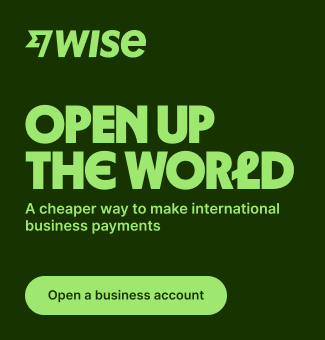Amazon is one of the leading marketplaces for online sellers all over the world and the most dominant in the UK. Whether you’re testing the waters with a side hustle or you’ve launched your own small business, Amazon offers incredible opportunities for independent sellers.
One of the biggest benefits of selling on Amazon is that you don’t need to worry about shipping. For a flat monthly fee, Amazon can store, pack, and ship your orders for you. Also, with around 2.7 billion site visits each month, you can reach an enormous audience and scale your business.
Key takeaways
- Amazon’s rising fees can significantly impact small business profitability, with some sellers facing costs up to 40% of product prices.
- Selling on Amazon provides access to a vast international market, enhancing brand visibility and potential sales growth.
- Flexible advertising options on Amazon allow sellers to control costs and target their audience effectively, maximising marketing potential.
That sounds great, but there are some potential drawbacks. Amazon seller fees have more than doubled this year, and a new VAT charge is just around the corner. The marketplace giant has also been accused of misusing data to undercut third-party sellers with its own cheaper items.
So, should we sell on Amazon or not? We weigh up both sides of this question to help you determine if it’s the right choice for your small business.
Downsides
1. Amazon fees have gone up as much as 85%
When you sell products on Amazon, you have two options when it comes to shipping orders. There’s Fulfilment by Seller, which means you personally cover the postage cost of each item you sell, or you can choose Fulfilment by Amazon (FBA). With FBA, you pay Amazon a flat fee, and they take care of postage, storage, and packing.
FBA is convenient, especially for small business owners who’ll appreciate having one less thing to worry about. However, convenience comes at a cost, which increased earlier this year.
The most significant FBA fee rises have been for standard, standard oversize, and large oversize parcels, which have increased from £0.19 to £0.35, £0.26 to £0.48, and £0.54 to £0.72, respectively.
Okay, so 50 odd pence for postage might not sound life-altering, but if we consider the percentage difference, that’s a whopping 85% increase – and those expenses can really stack up.
- How to sell on Amazon as a sole trader or limited company
- 10 businesses you can start from home
- VAT registration – the pros and cons
But this isn’t the first time that Amazon has ramped up their fees. In 2021, SOMO, the Amsterdam-based Centre for Research on Multinational Corporations, reported that Amazon’s listing and logistics fees had tripled since 2017.
In addition, its overall European advertising revenue grew 17-fold in the same period, and some logistics charges inflated by as much as 50%. So, let’s put this in real terms. One UK seller told The Guardian that last year, his Amazon fees were as high as 40% of the pre-VAT price of his products. That’s an enormous cost to bear, especially for a small business.
At this stage, whether or not it’s worth selling on Amazon depends on what you sell, how much you sell it for, and how much of it you sell.
For example, shipping 30 low-value items a month is probably not worthwhile, especially if you fulfil your orders yourself. However, selling 1,000 higher-ticket items a month via FBA on Amazon could be profitable.
2. New VAT charge from August 2024
Another important change that you need to be aware of if you sell (or are thinking about selling) on Amazon is the new Value-added Tax (VAT), which came in on 1 August 2024.
Independent sellers are now liable to pay a standard VAT charge of 20% on all fees incurred on the marketplace platform. This includes FBA, advertising, referral (the commission charge it takes for your sold items), and any other expenses associated with selling on Amazon.
If your small business is VAT-registered (meaning that its taxable turnover exceeds £90,000 a year), you can claim this cost back on your VAT return to HMRC. However, if you’re not VAT-registered, effectively, all your Amazon expenses will increase by 20% (on top of the hikes we’ve already discussed).
3. Amazon is under fire for undercutting independent sellers
It’s not just high fees that are affecting Amazon sellers. In June 2024, The Guardian reported that around 35,000 independent vendors filed a £1bn claim against Amazon for allegedly using their non-public data to undercut them by launching its own rival products at a cheaper price.
Sellers have also accused Amazon of manipulating consumer access to the ‘buy box’, the part of the listing that displays the price and delivery options. They accused the platform of diverting shoppers away from third-party retailer’s items and encouraging their own sales instead.
What does this mean for small businesses? If times aren’t tough enough already, Amazon certainly isn’t helping.
They are suspected of gaining an unfair advantage over small business owners with copycat products, and they’re also allegedly doing so by misusing their data. As a result, independent retailers are being squeezed out of what could be one of their primary sales streams.
Upsides
1. Amazon supports small businesses
Let’s talk about some good news. There is evidence that Amazon actively invests in strengthening its relationships with sellers, particularly entrepreneurs.
Their 2022 Impact Report revealed that they’d invested €3.4 billion in new services and tools to help UK SMEs grow and succeed. This includes doubling their fulfilment capacity in the two years before to improve logistics and launching Amazon Small Business Accelerator, a training scheme that aims to help entrepreneurs launch and grow their digital businesses through learning events. In 2021, they trained a total of 600,000 entrepreneurs.
Amazon claims that this financial investment helped SME brands navigate the economic uncertainty at the time and expand their multichannel capabilities to reach both online and offline consumers. As a result, UK SMEs sold 950 million products on Amazon in 2021, up from 750 million year-on-year.
Amazon reassures independent brands that “[They] continue to invent on their behalf and partner to build a valuable and inclusive community that offers unique growth opportunities.”
2. Selling on Amazon is generally profitable
Despite some of the challenges associated with selling on Amazon, figures show it’s generally profitable.
According to The State of the Amazon Seller report, over half (55%) of worldwide SME sellers reported profit margins above 15% in 2023. Also, 37% said that their profits increased in 2022 from 2021.
But what does it take to reach profitability on this platform? The report shows that most (77%) of sellers are “bootstrappers” who invested their savings in launching their businesses. These entrepreneurs say the payoff is high, with 68% making a profit within the first year.
Naturally, profits can vary depending on your products and industry, but the above figures paint an encouraging picture if you own a small business and are considering selling on Amazon.
3. Access an international market
One of the main challenges for a small business is discoverability. How do you get your brand noticed in those early stages when your resources are limited and people don’t know who you are yet?
Selling on Amazon allows you to instantly access an international market of over 300 million customers in over 100 countries. These figures keep growing as shoppers trust and rely on the app’s ease of use and unmatched delivery speed.
This could translate into higher sales, more new and returning customers, a stronger brand image, and considerable opportunities to scale your business.
4. Flexible advertising options
Advertising is an important part of growing your business. When you sell on Amazon, you can choose from a range of flexible marketing options that suit your business goals and budget.
Two main techniques (and most suitable for SMEs) are Sponsored Products and Sponsored Brands. Sponsored Products will bump your listing to the top of a user’s results page when they search for items or brands similar to yours, and Sponsored Brands help captivate your audience with a rich display that drives traffic to your Amazon store.
Both are pay-per-click campaigns, meaning you only pay for the advert if someone clicks on it.
The best thing is that you remain in complete control—simply end, pause, or restart your campaign when necessary. You can also adjust your spending by day so that even if your circumstances change, you can still maximise your advertising potential on the platform.
5. Amazon supports local communities
It’s no secret that Amazon has had more than their fair share of controversial press. If your priority is to align with a business based on your personal values, this giant corporation might not be your first choice. However, if you’re a socially-focused entrepreneur, you might be pleasantly surprised to learn about Amazon’s community impact and philanthropic commitments.
For example, their 2022 Impact Report shows that UK SME sellers have created more than 85,000 jobs to date, the top impacted regions being:
- London
- South East England
- North West England
- East of England
- West Midlands
In addition, they run a STEM education programme to inspire and equip students from underserved communities to pursue careers in science, technology, engineering, and mathematics. They also:
- Support food banks and non-profit organisations by delivering meals to the doorsteps of those in need
- Use their innovative technologies to provide fast and effective help for those fighting large-scale natural disasters
- Aim to fight hunger in London through The Felix Programme
By selling on Amazon, you could join the growing number of entrepreneurs supporting their communities, creating opportunities, and strengthening the economy.
The bottom line
Establishing your brand on a high-traffic platform, boosting sales with a global consumer base, and profiting from flexible advertising options offer considerable opportunities. However, as discussed in this blog, those opportunities can come with some challenges.
You probably guessed that we can’t give you a clear-cut answer as to whether selling on Amazon is worth it for your small business. It all depends on what you sell, your industry, your objectives, and what personally matters to you as an entrepreneur.
Please note that the information provided in this article is for general informational purposes only and does not constitute legal, tax, or professional advice. While our aim is that the content is accurate and up to date, it should not be relied upon as a substitute for tailored advice from qualified professionals. We strongly recommend that you seek independent legal and tax advice specific to your circumstances before acting on any information contained in this article. We accept no responsibility or liability for any loss or damage that may result from your reliance on the information provided in this article. Use of the information contained in this article is entirely at your own risk.














Join The Discussion
Comments (2)
Excellent article! These Amazon tips will be helpful for my own personal tax advisory UK business.
Thank you for your kind comment, David. It’s great to see how these Amazon tips can be adapted to other industries like personal tax advisory.
Kind regards,
The Rapid Formations Team